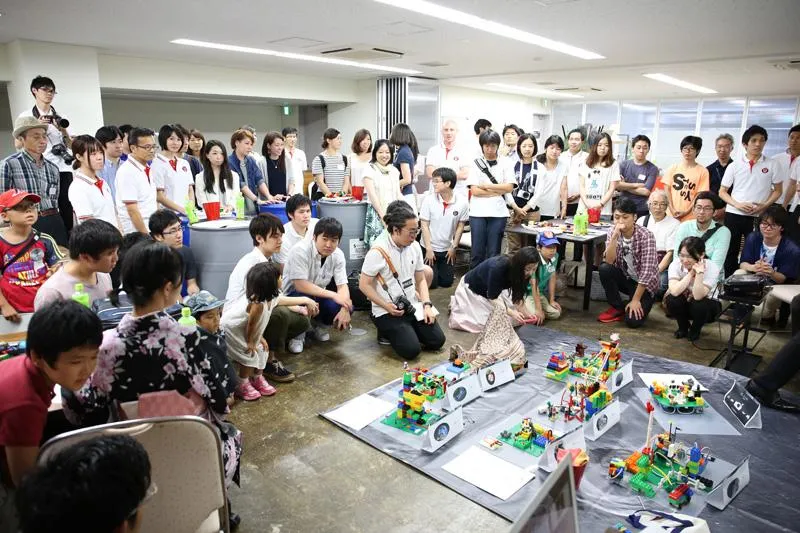Japan’s Co-Op Lunar Mission
Team HAKUTO aims for the moon, and something even more ambitious—opening the space business to everyone.
/https://tf-cmsv2-smithsonianmag-media.s3.amazonaws.com/filer/37/00/37005b35-3675-48ee-9760-db6995e138bc/hakuto-1.jpg)
Last summer I worked in Tokyo as an intern at Team HAKUTO, one of 16 teams competing for the Google Lunar XPRIZE, a $20 million award that awaits the first team to land a privately funded rover on the moon, drive it for 500 meters and send high-definition video back to Earth. To win the Grand Prize (or the $5 million second-place prize) teams have to announce a verified launch contract by the end of next year and reach the moon by the end of 2017.
HAKUTO’s entry is a pair of rovers, the two-wheeled “Tetris” and the four-wheeled “Moonraker.” Earlier this year, the team was awarded one of the contest’s $500,000 “milestone prizes” for demonstrating the type of rover mobility it will need on the moon. HAKUTO also announced plans to share a rocket ride with the Pittsburgh-based Astrobotic team and hold a NASCAR-style rover race once they reach the moon.
After working closely with the team for a month, however, I realized its real goal is something even more ambitious than a lunar landing—HAKUTO is challenging the notion that space exploration is only for rocket scientists. “We need to involve people from different fields to create new perspectives,” says Team Leader Takeshi Hakamada.
While the technical side of the project is led by the Space Robotics Lab at Tohoku University, 90 percent of the team members are volunteers. Along with the expected engineers and scientists, the project has drawn designers, videographers, writers, lawyers, and other non-technical consultants. Perhaps even more unusual, the volunteer team emphasizes cooperation over top-down management.
“There is no hierarchy in this team,” says Takuya Goto, HAKUTO’s Pro Bono Leader. “It’s more exciting this way, because each of us has the final say.”
The members teach and learn from each other, and find their own ways to contribute to the overall success of the project. People with engineering backgrounds work alongside the more business-minded volunteers, sharing tasks that are often outside their areas of expertise. “I haven’t seen any space companies with the same strategy,” said Goto. “As much as I want to win the race, I’m very interested to see how this approach works out.”

HAKUTO holds a regular team meeting every Saturday afternoon in Tokyo. The scene seems almost chaotic. In one corner you might see a group of engineers fiddling with the rovers, while next to them another group is discussing marketing tactics.
The team’s openness to non-technical volunteers has helped it reach out to the general public. The Google competition requires each team to cover 90 percent of its mission costs through private funding sources, which means that it needs to appeal to society at large. Team HAKUTO uses social media to advertise public “Fan Meetings,” and has set up a Supporters Club that anyone can join for 1,000 Yen ($8). Club members have premium access to progress reports on the rovers, and are invited to exclusive events.
That kind of outreach has helped the team raise money from non-space industries like Mitsukoshi, one of the largest department stores in Japan, Zoff (an eyewear company), and Japan Air Lines.
And always, the team is looking for ways to involve the public directly. “I think space is truly made tangible when ordinary people start to wonder ‘What could I do in space?’ ” says Yoshiaki Nakaue, the team’s community planner. “Our role is to win the race and prove to the world that space exploration is not only for large companies and organizations, but also for small teams like us.”
/https://tf-cmsv2-smithsonianmag-media.s3.amazonaws.com/accounts/headshot/Tomoya_Mori.jpg)
/https://tf-cmsv2-smithsonianmag-media.s3.amazonaws.com/accounts/headshot/Tomoya_Mori.jpg)